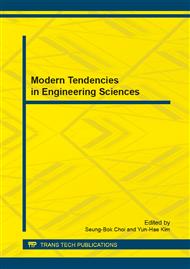p.106
p.113
p.123
p.127
p.135
p.140
p.145
p.154
p.159
Analysis on the Development of Residential Building Energy Conservation
Abstract:
Building Energy Conservation, especially the research about residential building energy in face of the worldwide energy crisis is particularly urgent. At present, various countries have an in-depth study of the residential building energy to explore different methods, new building materials, and new technology(such as new thermal windows and doors), as well as the use of new energy has been put more attention to in energy conservation field. Comparing the residential buildings between domestic and overseas countries’ progress about related technologies, we could find some evolution and look to the prospects for the future in energy-saving field. We took a domestic project that used energy-saving technology as a practical example, and then made a simple overview of the current energy situation in China so as to get a glimpse of the development about residential building energy-saving. Finally, the article provided some comments about this topic in sustainable view.
Info:
Periodical:
Pages:
135-139
Citation:
Online since:
February 2014
Authors:
Keywords:
Price:
Сopyright:
© 2014 Trans Tech Publications Ltd. All Rights Reserved
Share:
Citation:


